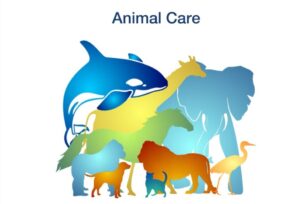With public campuses, a web of staff and audiences, and diverse animal residents and habitats, Zoos and Aquariums are complex facilities. Even so, our industry can infuse new ideas and innovations by taking inspiration from related facilities such as sports stadiums and convention centers. A special thank you to Russ Simmons and Mike Wooley of Venue Solutions Group for engaging in this conversation.
Get Creative with Revenue Generation
Carousels. Trains. Dynamic ticket pricing. We see the same revenue generation strategies across Zoos and Aquariums. While other industries may not have quite the same resources and opportunities, we know that desires and motivations are changing across audiences. For example, one study at sports stadiums shows that if 9 people are in line at a concession stand, the 10th person will not get in line. Revenue is lost simply through inefficiency, leading planners to consider offering fewer, high-quality options that can be quickly produced. Additionally, our audiences are seeking conveniences and personalized experiences, such as valet and premium parking. That said, Russ & Mike cautioned against monetizing too much at the risk of offending visitors and to consider investing in amenities that add value to the guest experience but do not cost extra, such as water bottle filling stations (bonus: they reduce single-use plastics!).
Plan for Obsolescence
With limited resources, Zoo and Aquarium infrastructure typically needs to last for 30 – 50 years. This means it is critical for spaces to be intentionally designed to remain flexible, dynamic, and functional over time. The primary, secondary, and tertiary uses of the space must be considered and purposefully integrated. For example, adding public restrooms to new buildings may incur additional expenses upfront but significantly increases long-term flexibility, including for events and programming. Using behind-the-scenes areas for revenue-generating and mission-advancing tours helps prevent cutting and value-engineering these spaces. Knowing a space will need to be maintained and updated, be deliberate in the selection of materials, choosing those that can easily be supported by in-house staff instead of by specialists.
Take the Time to Outline Systems & Processes
Facilities that are under-resourced often do not have the bandwidth to develop written systems and processes but doing so can be a valuable exercise. For existing tasks, events, or facilities, it ensures institutional knowledge is preserved even as people transition in and out and allows for the re-examining and refreshing of policies and procedures. For new projects, there are often unexpected consequences on infrastructure, such as the need for additional staff (maintenance, custodial, horticulture, animal care, etc.), and taking time to outline systems and processes at the onset helps to proactively identify and plan for these associated resources and costs.
Utilize Resources to Develop a Comprehensive Life Safety Plan
Everything that happens in your community can happen at your Zoo or Aquarium, such as natural disasters, violence, and health emergencies. With the intensifying effects of climate change and an increase in interpersonal conflicts since the start of the COVID-19 pandemic, Russ & Mike consider venues to be in a constant state of elevated risk. Developing a Comprehensive Life Safety Plan ensures your facility is prepared and staff is trained but doing so can be a daunting task. The good news is that free training and resources exist, such as through Fusion Centers of the Department of Homeland Security, located in every state, and the Zoo & Aquarium All Hazards Partnership.
Final Words
From Mike: For new spaces to be effective, efficient, and stand the test of time, the operational voice should be involved as early as possible in the design process of any new project.
From Russ: When troubleshooting a problem, bring a group of passionate and creative people together to identify barriers, then find ways to work around them.




